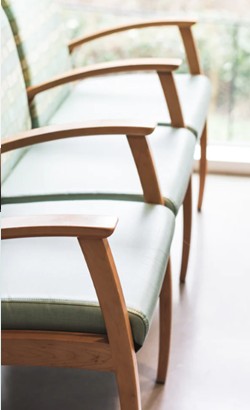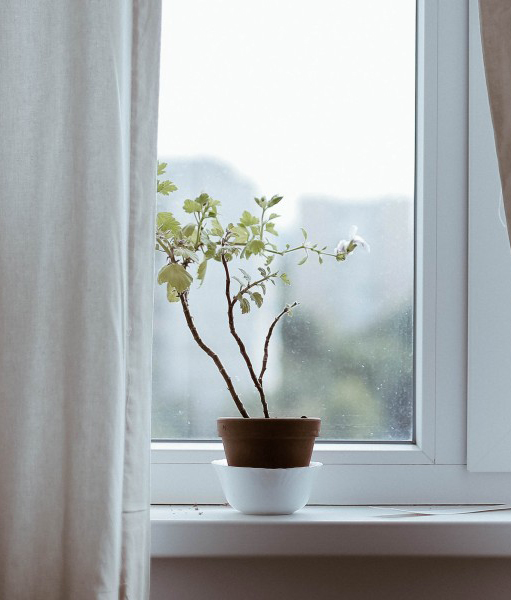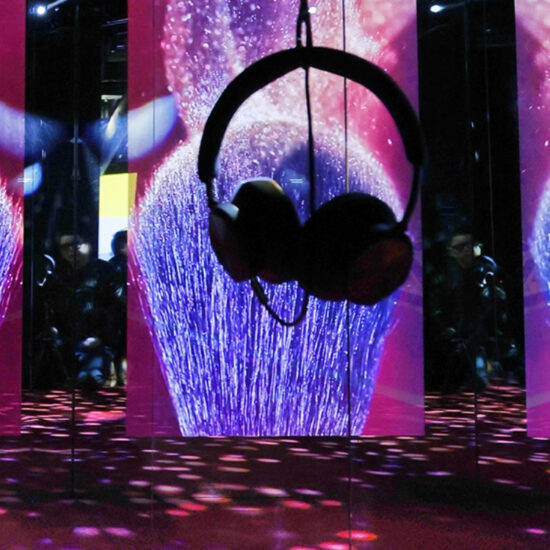These days people are reluctant to leave their homes, let alone schedule elective or non-urgent procedures in a hospital.
This not only puts people at risk as they delay visiting healthcare providers, but hospitals are in danger of catastrophic economic losses. Since COVID-19, the AHA estimates a total four-month financial impact of $202.6 billion in losses for America’s hospitals and health systems; that is an average of an incredible $50.7 billion per month.
So how do hospitals both keep the community healthy and ensure their own financial viability in light of COVID-19? Some are turning to creative solutions that make more scents than you might think.
Here are 5 ways scent makes hospitals run more efficiently and helps provide better care for patients.
Healthcare spaces must feel as clean as they are
With COVID-19 negatively impacting the number of patients willing to schedule elective procedures, hospitals are seeing a strain on revenues. Comforting and clean scents can attract patients by ensuring them that a hospital is a safe place to have a procedure or consultation.
“A recent poll conducted by Harris Interactive showed that 88 percent of people cite odor as an indicator of an environment’s cleanliness—or lack thereof.”
That means 88% of potential patients will be more willing to trust a healthcare environment if it smells as clean as it is, which can mean big money for hospitals struggling to stay open. Scent is an excellent way to combat concerns of cleanliness and help encourage patients to schedule healthcare appointments.
Waiting rooms should be relaxing spaces
 Anticipating a medical procedure or waiting on results is stressful enough without being surrounded by the scent of disposable gloves and hospital chemicals. Adding a soothing scent to a waiting room can ease tension and help patients feel more relaxed.
Anticipating a medical procedure or waiting on results is stressful enough without being surrounded by the scent of disposable gloves and hospital chemicals. Adding a soothing scent to a waiting room can ease tension and help patients feel more relaxed.
This concept is not new in the world of healthcare. In 2008, the University of Miami published research showing that lavender scents can relax infants and help them cry less.
Back in 1994, the Journal of Magnetic Resonance Imaging was already onto the idea. They published a study that found that soothing scent reduced anxiety in MRI patients by a whopping 63%.
“When a vanilla-like fragrance was administered to patients undergoing MRI scans, they were significantly less anxious/stressful and were able to complete the MRI scan.”
Happy environments can positively impact healing
Environmental attributes have a powerful impact on our healing process. From natural light and painted walls to subtle scents, there is no doubt that how a space feels makes a world of difference to patients and their well-being.
According to recent research in a U.S. pediatric hospital, “a stimulating odor [was] found to improve the evaluation of the service experience, and allowed the children to be more positive about their hospital stay.”
Children are not the only ones benefiting from improvements to their hospital surroundings. The American Hospital Association supports these findings and highlights that environmental conditions play a major role in all patient outcome and health.
“Research on how the physical environment affects health outcomes began in the 1980s. More than 600 studies have linked the hospital-built environment to factors such as patient satisfaction, stress, health outcomes and overall health care quality.”
I nspire cleanliness through scent
nspire cleanliness through scent
It’s clear that scent can provide patients and employees with a sense of clean and well-being, but did you know it can subconsciously encourage people to wash their hands? Citruses such as lemon, orange, and citrus blossom are usually found on clean hands, clean dishes, and clean clothes; therefore, it triggers subconscious ties to cleanliness.
A recent study found that an ambient citrus fragrance in a Miami hospital increased instances of hand cleaning among staff by 32%.
Perception is King
Adding fragrance into healthcare environments has historically been considered antithetical to an antiseptic environment. But with today’s diffusion technology, scent particles are microscopic, leave no residue, and are hypoallergenic in-air concentrations, which makes scenting a realistic solution for healthcare facilities.
Hospitals debating adding scent to their patient experience can look to leading research hospital, Emory Healthcare, for a case study of scent in action.
In 2018, Emory partnered with Prolitec services to add scent in four of their emergency areas as part of a study on the effects of fragrance in healthcare environments. After the 6-month study, Emory conducted surveys and found that the scented areas enjoyed a 3X improvement on their cleanliness score, attributed to the scent as there were no changes to the cleaning regimen.
The results were so positive that the hospital has continued the scenting service long after the end of the research.
Ambient scenting is a cutting-edge solution for hospitals looking to be on the forefront of innovative patient care across the globe. By diffusing fresh, clean fragrances, hospitals can successfully emerge from the pandemic crisis in a way that simply makes scents.
—————————-
Cited Souces
New AHA report finds financial impact of COVID-19 on hospitals & health systems to be over $200 billion through June: AHA. (n.d.). Retrieved from https://www.aha.org/press-releases/2020-05-05-new-aha-report-finds-financial-impact-covid-19-hospitals-health-systems
Sensorial Marketing for Those Who Can Wait non Longer: John Mc Donnell. (n.d.). Retrieved from https://www.scribd.com/document/372384313/Sensorial-Marketing
Lavender Bath Oil Reduces Stress and Crying and Enhances Sleep in Very Young Infants – PubMed. (n.d.). Retrieved from https://www.ncbi.nlm.nih.gov/pubmed?term=18053656
Reiling, J. (n.d.). The Impact of Facility Design on Patient Safety. Retrieved from https://www.ncbi.nlm.nih.gov/books/NBK2633/
Katie Liljenquist, C.-B. Z. (1970, August 1). The Smell of Virtue: Clean Scents Promote Reciprocity and Charity – Katie Liljenquist, Chen-Bo Zhong, Adam D. Galinsky, 2010. Retrieved from http://journals.sagepub.com/doi/abs/10.1177/0956797610361426
Naja, Maya & Brée, Joël & Zaichkowsky, Judith. (2012). The Use of Ambient Scent to Improve Children’s Hospital Experience. Journal of Marketing Trends. 1. 77-84.
King, D., Vlaev, I., Everett-Thomas, R., Fitzpatrick, M., Darzi, A., & Birnbach, D. J. (2015, July
“Priming” Hand Hygiene Compliance in Clinical Environments. Health Psychology.Advance online publication. http://dx.doi.org/10.1037/hea0000239
————————-
About the Author
Heather enjoys delving into research exploring the ways fragrance impacts people in their daily lives. She is a VP at Prolitec, a global provider of ambient scenting, and a recent graduate of the MBA program at Tulane University in New Orleans.
When not studying the fascinating ways fragrance intersects the world of business, Heather renovates historic houses and gets her hands dirty with her non-profit ceramics arts studio.







